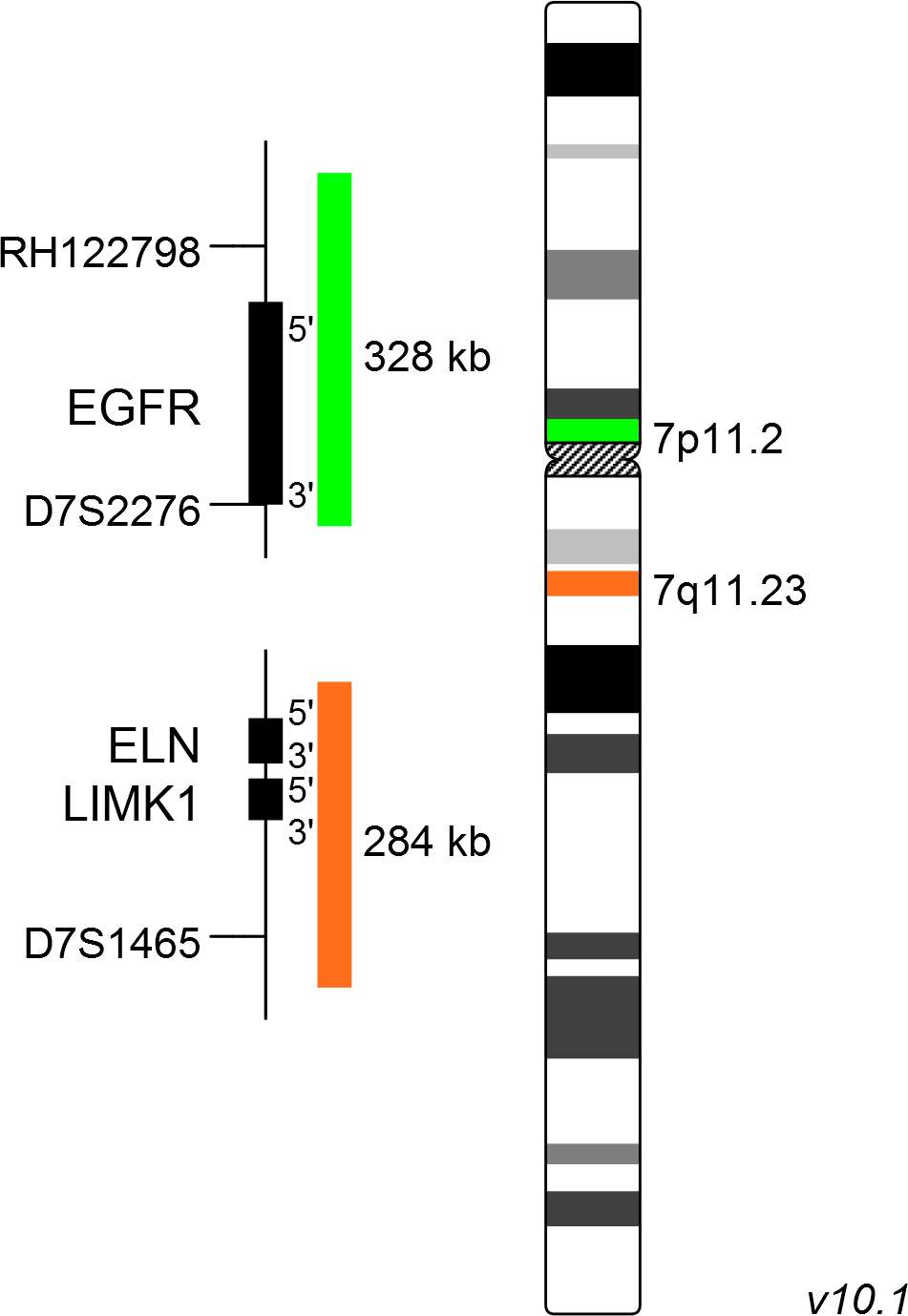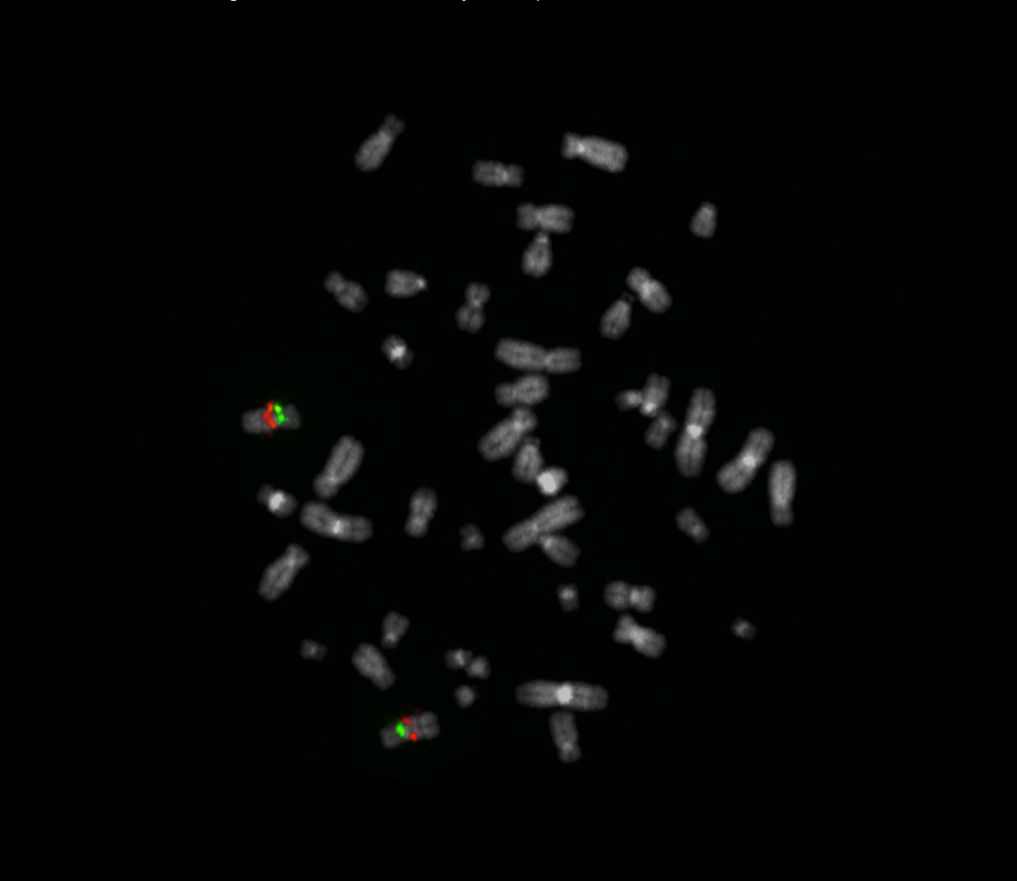
XL Williams-Beuren
Deletion Probe
- Order Number
- D-5418-050-OG
- Package Size
- 50 µl (5 Tests)
- Chromosome
- 077
- Regulatory Status
- IVDD
IVDR Certification
MetaSystems Probes has already certified a wide range of FISH probes, according to IVDR.
This product remains IVDD-certified until further notice.
Discover all IVDR-certified products
XL Williams-Beuren consists of an orange-labeled probe hybridizing to the ELN/LIMK1 gene region at 7q11.23 and a green-labeled probe hybridizing to a region at 7p11.2.
Probe maps for selected products have been updated. These updates ensure a consistent presentation of all gaps larger than 10 kb including adjustments to markers, genes, and related elements. This update does not affect the device characteristics or product composition. Please refer to the list to find out which products now include updated probe maps.
Probe map details are based on UCSC Genome Browser GRCh37/hg19, with map components not to scale.
Williams-Beuren syndrome (WBS) is a contiguous gene deletion syndrome with an estimated prevalence of 1:7.500 to 1:25.000 newborns. WBS phenotype is complex, age-dependent and varies between individuals. Newborns have characteristic ´elfin-like´ facial features with full cheeks, small head, flat nasal bridge, broad forehead, prominent open mouth, broad nose and puffiness around eyes and lips. Patients have a wide spectrum of features affecting the cardiovascular system, development and cognition, teeth, endocrine system, gastrointestinal tract, acoustic perception, nose and throat. One of the most fatal and characteristic complications is supravalvular aortic stenosis (SVAS).
WBS is associated with a chromosomal microdeletion in region 7q11.23. The common critical region is about 1.6Mb in size and contains more than 20 genes, including ELN (elastin) and LIMK1 (LIM domain kinase 1). Haploinsufficiency of ELN correlates with cardiovascular problems and is responsible for the SVAS phenotype of WBS patients. Deletions in region 7q11.23 are a consequence of non-allelic homologous recombination between low copy repeat elements flanking the WBS deleted region. Most WBS cases are sporadic, only few cases are transmitted vertically.
Clinical Applications
- Microdeletion Syndrome (MicroDel)

Normal Signal Pattern:
Two green (2G) and two orange (2O) signals.

Aberrant Signal Pattern:
Two green (2G) and one orange (1O) signal resulting from loss of one orange signal.
- Wu et al (1998) Am J Med Genet 78:82-89
- Bayés et al (2003) Am J Hum Genet 73:131-151
- Jurado (2003) Horm Res 59 (suppl 1):106-113
Certificate of Analysis (CoA)
or go to CoA Database




